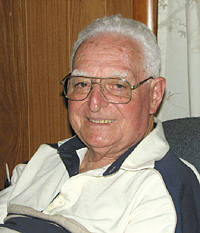Lunar Camera Creator Stan Lebar Dies at 84

Stanley Lebar, who headed the Westinghouse Electric project to deliver live video from the moon in 1969, died of cardiac arrest on Dec. 23 at the age of 84.
Lebar’s special camera was used by Astronaut Neil Armstrong when he first set foot on the lunar surface during the Apollo 11 mission. It had been designed to operate at temperatures ranging between minus 250 degrees and plus 300 degrees Fahrenheit in the vacuum of space, and to automatically cope with great extremes of light intensity. The camera also had to deliver live video in only 500 kHz of bandwidth. Ten of the special cameras were constructed in a contract with NASA, and the price tag for each was $1 million.
Lebar was the subject of a July 8, 2009 TV Technologyarticle that described the how the video coverage of man’s first landing on the moon 40 years earlier was achieved. He revealed that during the camera development program he had been tapped by Westinghouse management as the company’s point person to address the world media in the event that the camera didn’t function properly. “That was a reality that I preferred never having to actually cope with,” Lebar said. The device did work as planned, allowing an estimated global audience of 600 million persons to witness the historic first footsteps on the moon.
For several years prior to the 40th anniversary of the Apollo 11 event, Lebar was heavily involved in an attempt to locate NASA tapes containing the special unconverted 320-line/10 frame per second video produced by the Westinghouse camera. He appeared at a July 16, 2009 Washington, D.C. press conference with NASA personnel who announced that the search was being abandoned, as the tapes had probably been degaussed and reused.
Lebar received his engineering degree from the University of Missouri and served in the U.S. Army Air Corps during World War II. He grew up in Brooklyn, N.Y., but was a long time resident of Severna Park, Md. Lebar is survived by his wife of 61 years and three children.
The professional video industry's #1 source for news, trends and product and tech information. Sign up below.
